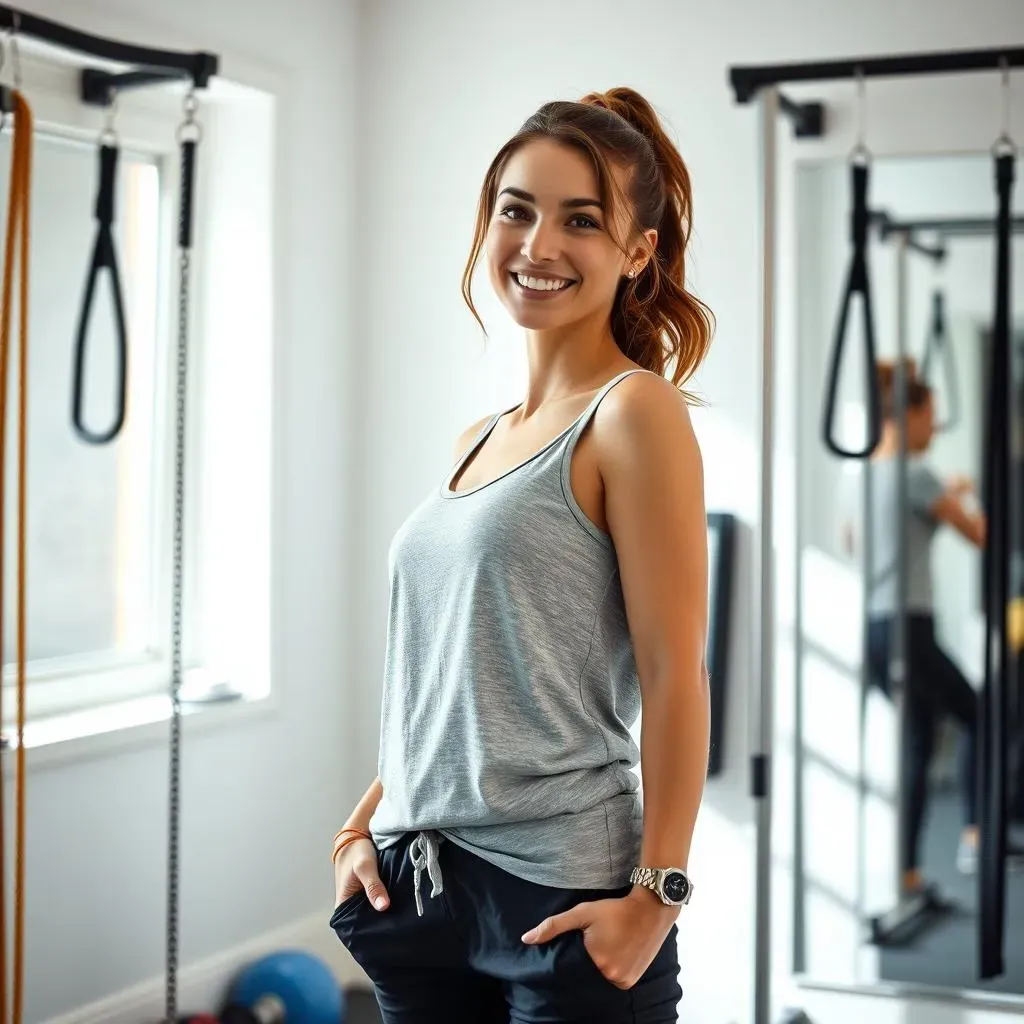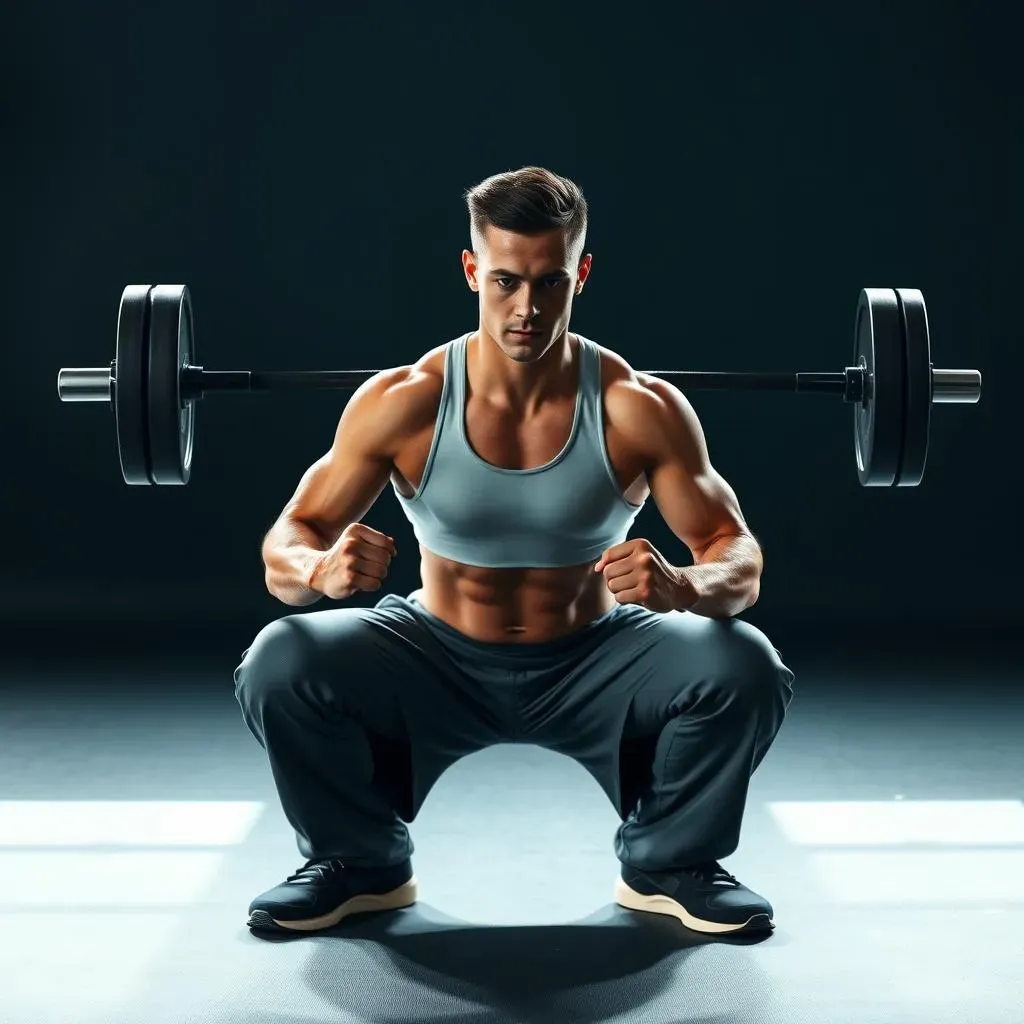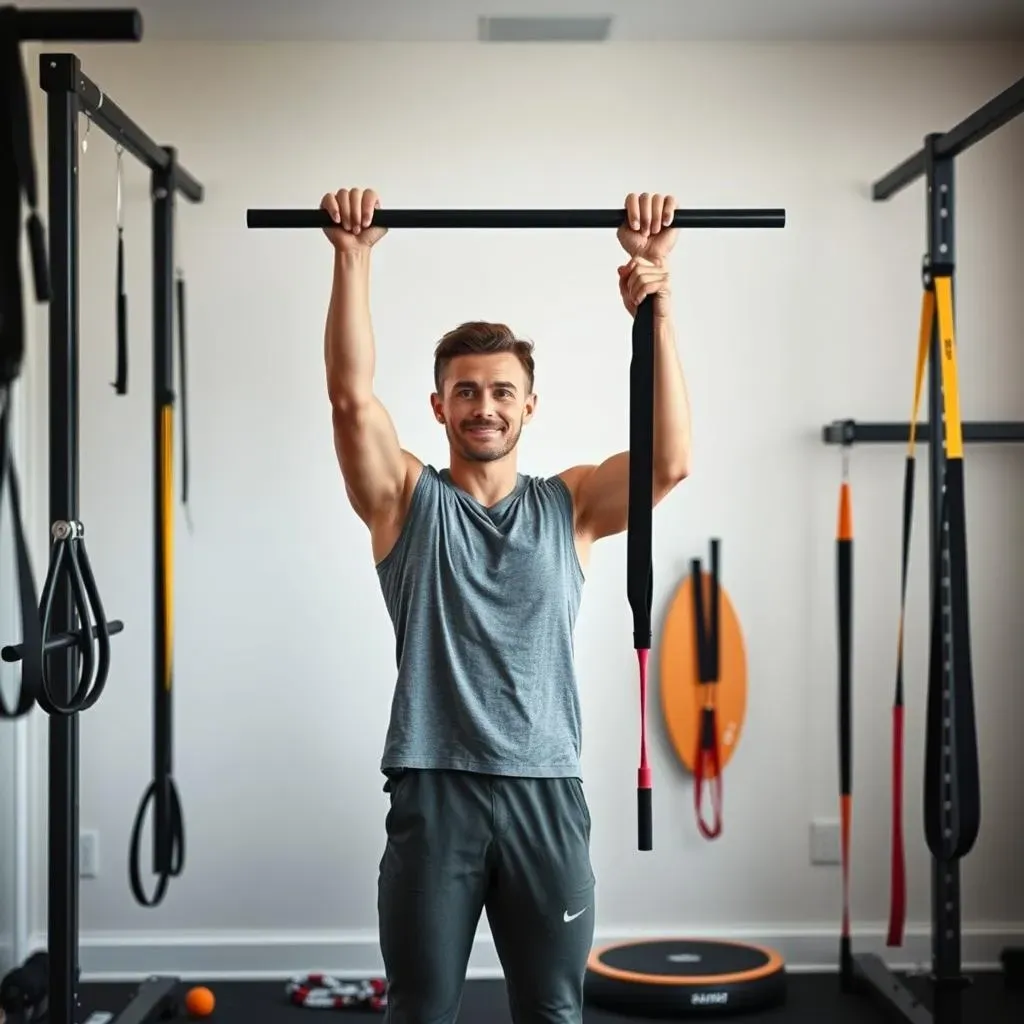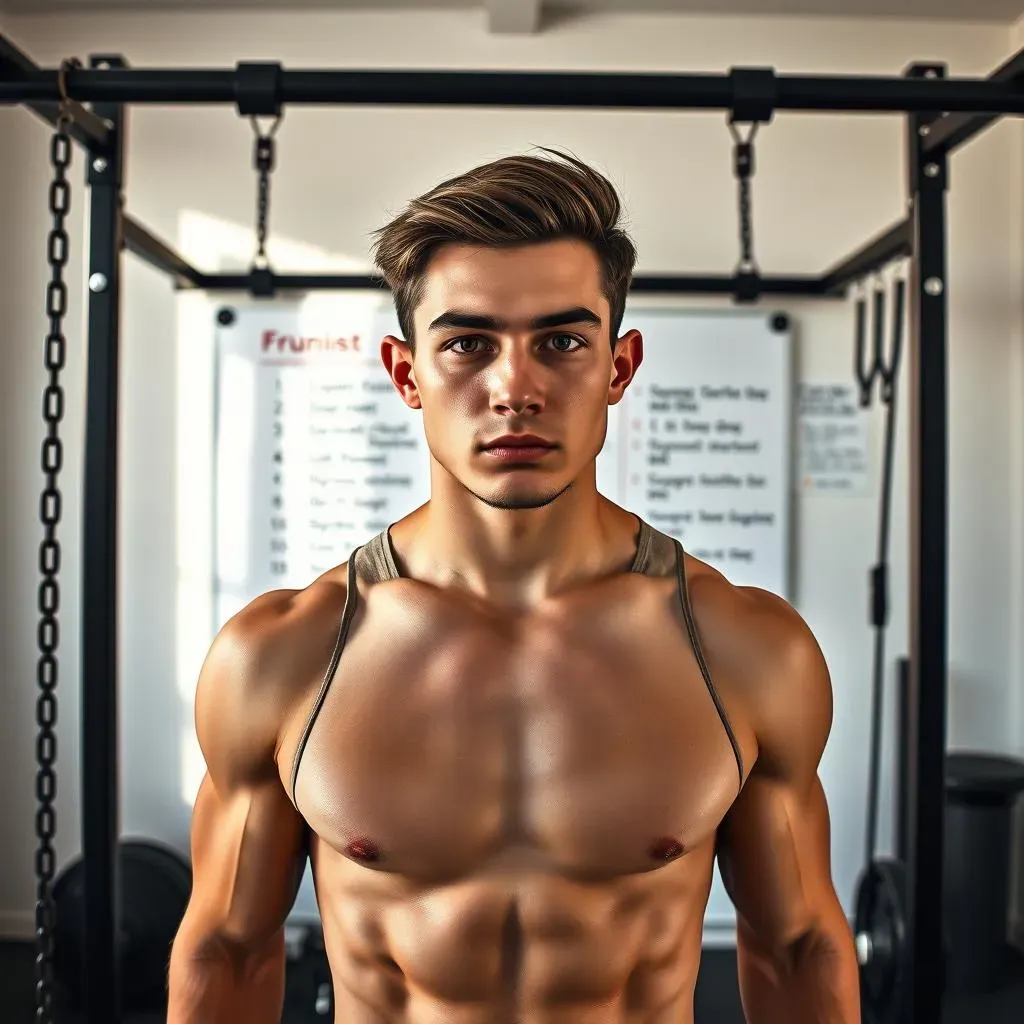Table of Contents
Welcome to the world of at home calisthenics, where you can transform your body and unlock your full potential from the comfort of your own space. Calisthenics, a form of bodyweight exercise, has gained popularity in recent years due to its effectiveness and convenience. With at home calisthenics, you can say goodbye to expensive gym memberships and hello to a stronger, leaner, and more flexible you. In this article, we will delve into the benefits of at home calisthenics, explore essential exercises to get you started, discuss the most useful equipment to enhance your workouts, and provide tips on creating a structured routine that suits your fitness goals. Whether you're a beginner or an experienced athlete, at home calisthenics offers a versatile and efficient way to improve your overall fitness. So, let's dive in and discover how at home calisthenics can revolutionize your fitness journey.
Benefits of At Home Calisthenics: Why Train from the Comfort of Your Own Space

Benefits of At Home Calisthenics: Why Train from the Comfort of Your Own Space
Flexibility and Convenience
One of the most significant advantages of at home calisthenics is the flexibility it offers. With a busy schedule, it can be challenging to find time to commute to the gym. At home calisthenics allows you to workout at any time, whether it's early in the morning, during your lunch break, or late at night. You can create your own schedule and fit in a workout whenever it suits you best.
This convenience is especially beneficial for those with family commitments or those who live in areas with limited gym access. Additionally, at home calisthenics eliminates the need to wait for equipment or deal with crowded gym environments, allowing you to focus solely on your workout.
Benefits | Description | Advantages |
|---|---|---|
Flexibility | Workout at any time | Convenience |
Cost-Effective | No gym membership required | Save money |
Comfort | Workout in familiar surroundings | Reduced intimidation |
Cost-Effectiveness and Privacy
At home calisthenics is a cost-effective way to stay fit. Without the need for a gym membership or expensive equipment, you can allocate that money towards other aspects of your life. Moreover, working out at home provides privacy, which is essential for those who feel self-conscious about their bodies or prefer to exercise without an audience.
Privacy also allows you to focus on your form and technique without distractions, helping you to improve your overall performance. For those who value solitude, at home calisthenics offers a peaceful environment to connect with your body and mind.
- No gym membership fees
- No need for expensive equipment
- Private and quiet environment
- Improved focus on form and technique
Personalization and Progress Tracking
At home calisthenics allows you to tailor your workout routine to your specific fitness goals and needs. You can create a personalized routine that targets the areas you want to improve, whether it's building strength, increasing flexibility, or enhancing endurance.
Additionally, tracking your progress is easier when working out at home. You can keep a workout log, monitor your progress through mirrors, and adjust your routine as needed. This personalized approach helps you stay motivated and see the results you desire.
Essential Exercises for At Home Calisthenics: Building Strength and Endurance

Essential Exercises for At Home Calisthenics: Building Strength and Endurance
Upper Body Exercises for Strength and Endurance
When it comes to building upper body strength, calisthenics offers a variety of exercises that can be done at home with minimal equipment. Pull-ups, for example, are an excellent way to build strength in your back, arms, and shoulders. If you don't have a pull-up bar, you can use a resistance band or even a towel draped over a sturdy door.
Push-ups are another essential exercise for building chest, shoulder, and tricep strength. You can modify push-ups to suit your fitness level, starting with knee push-ups and gradually moving to standard push-ups. Dips, using a chair or bench, target the triceps and can be done in the comfort of your own home.
Exercise | Muscles Worked | Equipment Needed |
|---|---|---|
Pull-ups | Back, Arms, Shoulders | Pull-up bar or resistance band |
Push-ups | Chest, Shoulders, Triceps | None |
Dips | Triceps | Chair or bench |
Lower Body Exercises for Strength and Endurance
Squats, lunges, and calf raises are essential lower body exercises that can be done at home. Squats work multiple muscle groups including legs, glutes, and core. Lunges target the legs and glutes, while calf raises improve ankle strength and flexibility.
These exercises can be modified to suit your fitness level. For example, you can start with bodyweight squats and lunges, and then progress to weighted versions using water bottles or dumbbells. Calf raises can be done using bodyweight or with weights for added resistance.
- Squats: 3 sets of 10 reps
- Lunges: 3 sets of 10 reps (per leg)
- Calf raises: 3 sets of 15 reps
Core Exercises for Stability and Endurance
A strong core is essential for overall stability and endurance. Planks, Russian twists, and leg raises are effective core exercises that can be done at home. Planks engage the entire core, while Russian twists target the obliques. Leg raises improve lower abdominal strength.
These exercises can be incorporated into your daily routine, even during commercial breaks while watching TV. Start with shorter sets and gradually increase the duration and intensity as you build endurance.
Exercise | Duration/Reps | Equipment Needed |
|---|---|---|
Plank | 3 sets of 30-second hold | None |
Russian twists | 3 sets of 15 reps | Weight or medicine ball |
Leg raises | 3 sets of 10 reps | None |
Effective Equipment for At Home Calisthenics: Tools to Enhance Your Workout

Effective Equipment for At Home Calisthenics: Tools to Enhance Your Workout
Basic Equipment for Calisthenics
When it comes to at home calisthenics, you don't need a lot of expensive equipment to get started. In fact, some of the most effective exercises require minimal to no equipment at all. However, having a few essential tools can help you enhance your workout and target specific muscle groups.
A pull-up bar is a great investment for any calisthenics enthusiast. It can be installed in a doorway and used for pull-ups, chin-ups, and leg raises. Resistance bands are another versatile piece of equipment that can be used for a variety of exercises, from bicep curls to chest presses.
Equipment | Description | Benefits |
|---|---|---|
Pull-up Bar | Installed in a doorway for pull-ups, chin-ups, and leg raises | Targets back, arms, and shoulders |
Resistance Bands | Portable bands for various exercises | Improves strength and flexibility |
Advanced Equipment for Enhanced Workouts
As you progress in your calisthenics journey, you may want to consider investing in more advanced equipment to challenge yourself and target specific muscle groups. Parallettes are a great tool for building upper body strength, particularly in the arms and shoulders.
Push-up grips can help you perform more efficient push-ups by allowing for a fuller range of motion and engaging your core. Wrist wraps provide support and stability for your wrists during exercises like handstands and L-sits.
- Parallettes: Improve upper body strength and control
- Push-up Grips: Enhance push-up technique and engage core
- Wrist Wraps: Support and stabilize wrists during exercises
Additional Tools for Variety and Progression
For those looking to add variety to their workouts, there are several other tools that can be incorporated into their routine. A jump rope is a great cardio tool that can improve endurance and agility. A balance board or BOSU ball can help improve balance and stability.
Weighted vests or ankle weights can add an extra challenge to your workouts, allowing you to progress and increase intensity. These tools can be used in conjunction with bodyweight exercises to create a more dynamic and engaging workout.
Equipment | Benefits | Usage |
|---|---|---|
Jump Rope | Improves cardio and agility | Warm-up or cardio segment |
Balance Board/BOSU Ball | Enhances balance and stability | Core and balance exercises |
Weighted Vest/Ankle Weights | Increases intensity and challenge | Added to bodyweight exercises |
Creating a Structured At Home Calisthenics Routine: Tips for Progression and Variation

Creating a Structured At Home Calisthenics Routine: Tips for Progression and Variation
Setting Goals and Assessing Current Fitness Level
Before creating a structured at home calisthenics routine, it's essential to set specific, achievable goals. Whether you're a beginner looking to improve overall fitness or an advanced athlete seeking to increase strength and endurance, defining your goals helps you stay motivated and focused.
Assessing your current fitness level is also crucial. This involves evaluating your strength, flexibility, and endurance. You can do this by performing a series of exercises like push-ups, squats, and planks to gauge your starting point.
Goal | Description | Benefits |
|---|---|---|
Improve Overall Fitness | Increase strength, endurance, and flexibility | Enhanced overall health and well-being |
Increase Strength | Build muscle mass and power | Improved athletic performance |
Enhance Endurance | Increase stamina and cardiovascular health | Better overall endurance |
Creating a Routine and Progressing Over Time
A well-structured routine is key to making progress in calisthenics. Start by allocating specific days for different muscle groups, such as upper body, lower body, and core. Begin with 2-3 sets of 8-12 repetitions for each exercise and gradually increase the intensity as you build strength and endurance.
Progression is crucial in calisthenics. As you get stronger, incorporate more challenging exercises and increase the difficulty of existing ones. For example, move from knee push-ups to standard push-ups, or from assisted pull-ups to unassisted ones.
- Start with basic exercises and progress to more challenging ones
- Increase repetitions or sets as you build endurance
- Adjust your routine every 4-6 weeks to avoid plateaus
Warm-Up, Cool-Down, and Nutrition
A proper warm-up is essential before any workout. Incorporate light cardio such as jumping jacks or jogging in place, followed by dynamic stretching like arm circles and leg swings.
After your workout, take time to cool down with static stretches to improve flexibility and reduce muscle soreness. Adequate nutrition is also vital, ensuring you fuel your body with a balanced diet that includes proteins, carbohydrates, and healthy fats.
Warm-Up | Cool-Down | Nutrition |
|---|---|---|
Light cardio and dynamic stretches | Static stretches | Proteins, carbohydrates, healthy fats |
Maintaining Motivation and Tracking Progress
Staying motivated is crucial for consistency. Share your goals with a friend or family member and ask them to hold you accountable. Celebrate small victories along the way, and don't be too hard on yourself if you miss a workout.
Tracking progress is also important. Use a workout log to monitor your exercises, sets, and repetitions. Take progress photos and measurements to see the physical changes in your body.
- Find a workout buddy for motivation
- Celebrate small victories
- Use a workout log and track progress
Embracing the Power of At Home Calisthenics
In conclusion, at home calisthenics offers a holistic approach to fitness, providing a convenient, cost-effective, and highly effective way to achieve your health and wellness goals. By incorporating the essential exercises, utilizing the right equipment, and structuring a personalized routine, you can unlock the full potential of your body. Remember, the beauty of at home calisthenics lies in its flexibility and adaptability, allowing you to progress at your own pace and tailor your workouts to your unique needs. So why wait? Start your at home calisthenics journey today and experience the transformative power of bodyweight training. Visit calisthenicsfrance.com for more tips, guides, and inspiration to help you on your fitness journey.
